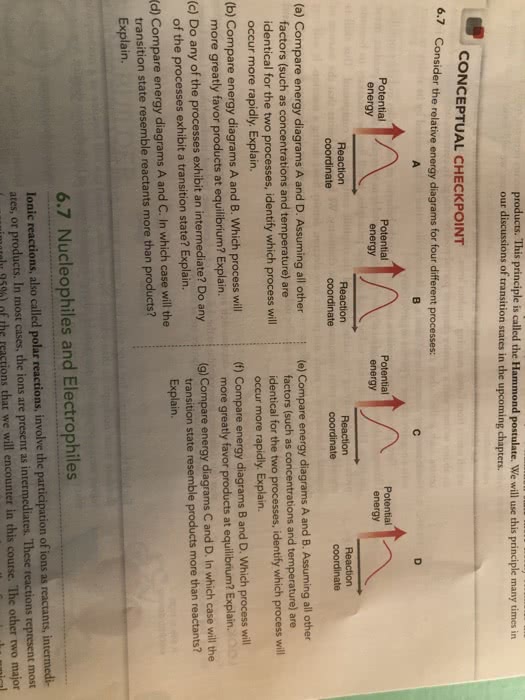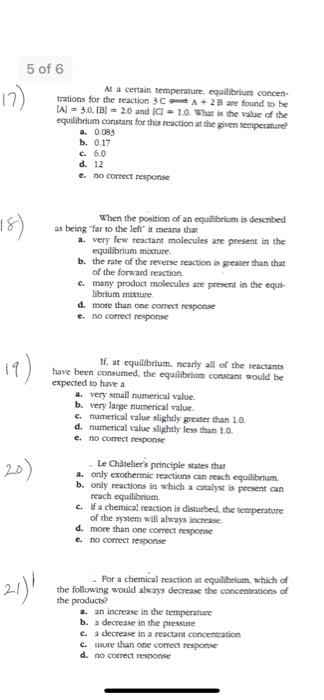CHM 1311 Lecture Notes - Lecture 3: Buffer Solution, Limiting Reagent, Equilibrium Point
Document Summary
Equilibrium is a dynamic state when the rate of reactants becoming products equals the rate of products becoming reactants. The reaction never goes to completion, but instead continues on in this state indefinitely. In chemical equations, this is represented by a two sided arrow, indicating that the reaction is continuing in both the forward and backward direction at this point. Most reactions reach equilibrium, unless there is a limiting reactant present. In some reactions, the equilibrium favours the products, which means there will be more products than reactants present when the reaction reaches equilibrium. Other reactions are reactant favoured, indicating the opposite. In an industrial sense, reactions that favour the products are more economical than those that favour the reactants. Chemists experiment with ways to alter an equilibrium state by placing stressors on the reaction. Chatelier"s principle explains what occurs to equilibria when a reaction is affected in a certain way.



